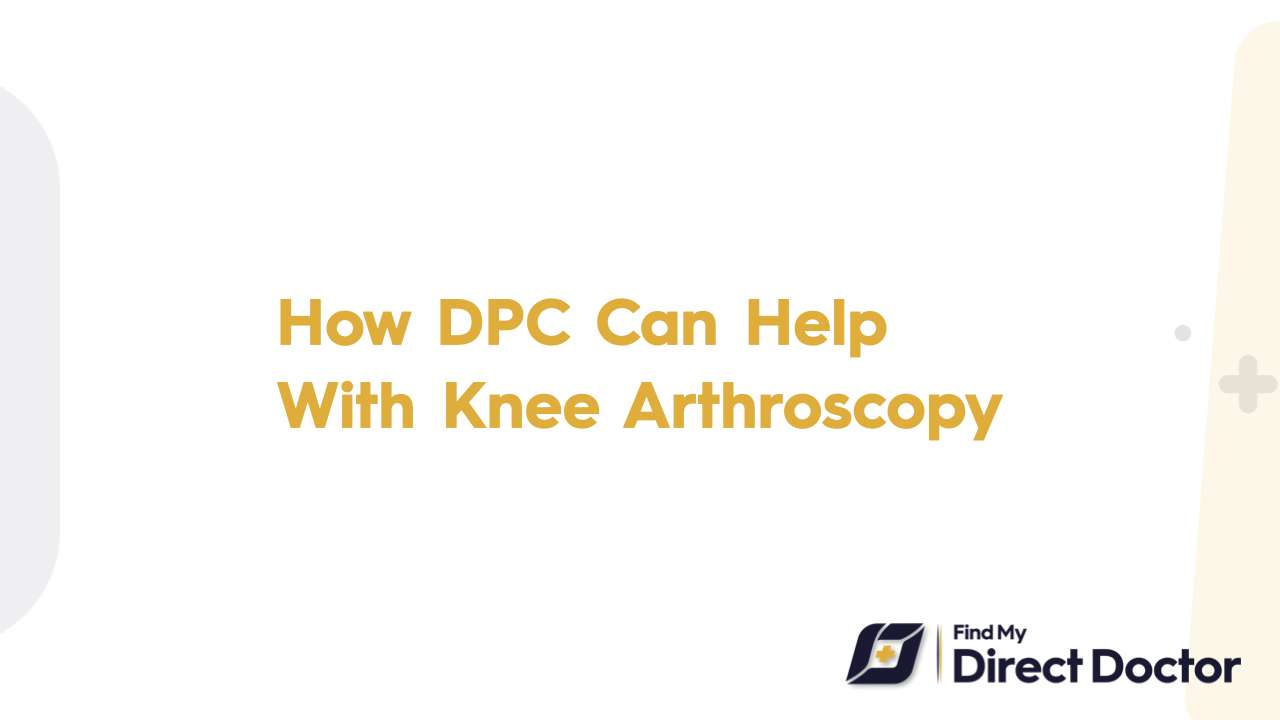Knee Arthroscopy and Direct Primary Care (DPC): Precision Recovery, Personalized Support
If you have knee pain from a torn meniscus, damaged cartilage, or loose bodies that makes it hard for you to move around, knee arthroscopy can fix the problem with little damage to your body. DPC makes sure that this procedure is done by experts and that you get good care afterward.

Knee arthroscopy is a type of surgery that uses a small hole to look inside the joint.
Knee arthroscopy uses a camera and small cuts to:
- Fix tears in the meniscus: Cut or sew up cartilage that is damaged.
- Take out loose bodies: Cartilage or bone pieces that cause locking.
- Microfracture or chondroplasty can fix smooth cartilage defects.
It takes 2 to 6 weeks to heal, and you can slowly start doing things again.
Important information for patients:
- Uses: Helps with injuries from sports, arthritis, or trauma.
- Safety: Low risk; less than 2% chance of infection or blood clots.
- Costs: Traditional clinics charge between 5,000 USD and 10,000 USD. DPC lowers costs by offering bundled care.
Risks of putting off surgery:
- Arthritis that gets worse quickly and long-term pain.
How DPC Changes the Way Knee Arthroscopy Is Done
Direct Primary Care (DPC) puts patients first and coordinates their care instead of splitting it up.
1. Full Pre-Op Optimization
- Advanced imaging: MRI to find out what kind of tear it is and where it is.
- Working together as surgeons: Work with the best orthopedic doctors.
- Prehab programs: Make your quads and hamstrings stronger so you can heal faster.
2. Clear costs and all-around help
- Prices that include everything: Membership includes labs before surgery, physical therapy after surgery, and follow-up visits.
- Lower fees: DPC patients save between 2,000 USD and 5,000 USD by getting lower rates for surgery.
- Other choices: Talk about PRP or hyaluronic acid injections if surgery isn't needed right away.
3. Recovery with care and mobility that lasts
- Access 24 hours a day, 7 days a week: Take care of sudden swelling, fever, or more pain right away.
- Plans for rehab that are unique to you: Help people move safely from crutches to strength training.
- Preventive care: Suggest low-impact exercises like swimming and cycling to keep the joint safe.
Success Stories from Real Life
- Case 1: Sarah, 28, had a torn meniscus. Her DPC team fixed it with arthroscopy, and she was back to playing soccer in 8 weeks.
- Case 2: John, who is 55 years old and has knee osteoarthritis. John's DPC provider did chondroplasty, which put off getting a new knee for years.
Frequently Asked Questions: DPC Knee Arthroscopy
- Q: When can I drive after surgery?
- A: 1–2 weeks for the left knee and 3–4 weeks for the right knee (if automatic).
- Q: Do I need to go to physical therapy?
- A: Yes. DPC sets up physical therapy at home or in a clinic for 4 to 6 weeks.
- Q: Do you get follow-up MRIs?
- A: Yes. Schedule imaging in six months to see how well the healing is going.
- Q: What happens if the pain doesn't go away after surgery?
- A: DPC looks into other treatments that can help, like genicular nerve blocks.
Why DPC is the best at preserving joints
The American Academy of Orthopaedic Surgeons (AAOS) stresses the importance of acting quickly. DPC works by:
- Cutting down on wait times: 90% of surgeries happen within 2 weeks instead of the usual 6 weeks or more.
- Proactive PT cuts stiffness rates by 40%, which helps avoid problems.
- Saving money: Members save between 3,000 USD and 7,000 USD by getting care in a package.
Final Thoughts
Knee arthroscopy isn't just about fixing a tear; it's also about getting you back to moving without pain. With DPC, you get a partner who makes sure that everything goes smoothly, from diagnosis to rehab, so you get the best results. No problems with insurance or broken follow-ups—just expert care that helps you walk, run, and live an active life again.






